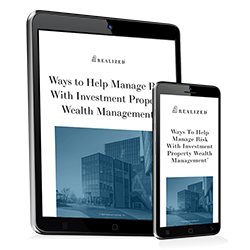
In recent years, urbanization has dramatically reshaped landscapes, economies, and communities worldwide. As cities expand, they offer various opportunities but also pose unique risks for real estate investors. Understanding these risks and planning accordingly can be critical for investment property owners aiming to maximize returns and minimize potential pitfalls.
The Urbanization Phenomenon
Urbanization refers to the increasing concentration of populations into cities and metropolitan areas. This trend is fueled by the search for better employment opportunities, enhanced infrastructure, and improved living standards. However, while urbanization can drive economic growth, it can also present substantial risks for real estate investors.
Economic and Regulatory Risks
As urban areas grow, they often undergo significant regulatory changes. Local governments might implement new zoning laws and building codes to accommodate the growing population, which can affect property valuations. Investors must stay informed about these regulatory shifts that might impact property usage and development potential. Additionally, cities often face budget constraints that can lead to higher property taxes or changes in local services, affecting both operating costs and the desirability of locations.
Infrastructure Strain
Rapid urban growth can strain existing infrastructure such as roads, public transit, water, and electricity services. Properties located in areas where infrastructure can't keep pace with population growth may experience depreciation or stagnation in value. It's crucial for investors to assess the capacity and future investments planned in these urban infrastructures before committing to property in burgeoning areas.
Market Saturation and Competition
With burgeoning populations, some urban areas may experience market saturation, where the supply of properties exceeds demand. This can occur when developers rush to capitalize on growth without adequate market analysis, leading to a glut in housing or commercial space. Investors should perform robust market research to avoid entering oversaturated markets, which can suppress rental yields and property prices.
Environmental Concerns
Urban areas are often more susceptible to environmental issues such as pollution, waste management, and climate change impacts like rising temperatures and flooding. These factors can affect property values and insurance costs, as well as impose direct expenses related to mitigation strategies that might be necessary for maintaining property standards and legal compliance.
Socio-Economic Dynamics
Urbanization frequently results in socio-economic shifts, including gentrification, which might increase property values and investor profits but also can lead to community pushback and instability. Understanding demographic changes and cultural trends can help investors anticipate these shifts and choose locations that align with their investment strategies.
Navigating Urbanization Risks
For investors, thorough due diligence is key to navigating urbanization risks. By analyzing demographic data, economic forecasts, and infrastructure plans, investors can make informed decisions. Diversification across multiple regions or property types can mitigate localized risks, offering a buffer against market volatility in any single area.
Moreover, forming partnerships with local experts and staying abreast of policy changes will ensure that investors are well-positioned to adapt to the consequences of urban growth. Ultimately, urbanization presents both challenges and opportunities, and those investors who strategically plan for its implications stand to benefit the most.



